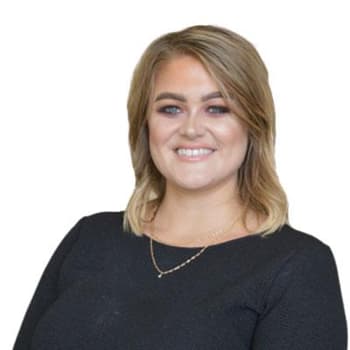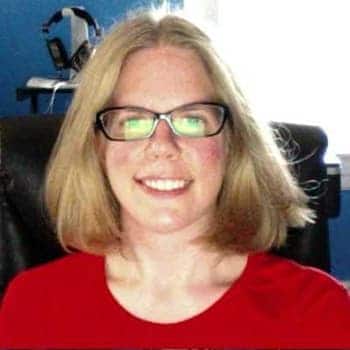As many as three-fourths of people with a psychotic disorder have a co-occurring substance use disorder. However, drugs can trigger or worsen psychotic symptoms.
As many as three-fourths of people with apsychotic disorderhave a co-occurring substance use disorder. Unfortunately, these comorbid disorders have significant negative effects. Drugs can trigger or worsen symptoms of psychotic disorder and reduce the efficacy of antipsychotic medications.
Statistics on Psychotic Disorders and Drug Abuse
Statistics show that co-occurring disorders are a significant issue for people with psychotic disorders:
- Almost 30 percent of people with a psychotic disorder have a comorbid alcohol use disorder.
- Approximately 40 percent of people who experience a first psychotic break actively use marijuana.
- About 50 percent of people with schizophrenia have a co-occurring substance use disorder.
- Over 70 percent of people with schizophrenia are dependent on nicotine.
- Slightly less than 10 percent of people with psychotic disorders have co-occurring stimulant use disorders.
Effects of Substance Abuse on Psychotic Disorders
Many drugs cause symptoms similar to those of psychotic disorders. Hallucinogens like LSD typically trigger multiple sensory hallucinations. In larger amounts, marijuana can cause perceptual distortions, paranoid delusions and auditory hallucinations. Stimulants like cocaine and methamphetamines provoke delusional paranoia as well as hallucinations at higher doses. In some cases, alcohol or drug use can trigger substance-induced psychotic disorder, or a temporary state of psychosis caused by withdrawal from or consumption of a substance. During this state of psychosis, people may experience hallucinations or delusions.
For people who already experience delusions and hallucinations from psychotic disorders, the effects of certain substances can dramatically intensify their distress and disorientation. People experiencing the symptoms of psychotic disorders have difficulty navigating their environments, which can make the efforts to obtain substances even more dangerous. Substance misuse is linked with higher rates of violence, self-harm, and suicide.
Treatment Can Be Life Changing. Reach out today.
Whether you are struggling with addiction, mental health or both, our expert team is here to guide you every step of the way. Don’t wait— reach out today to take the first step toward taking control of your life.
When substance use progresses to addiction, the withdrawal phase becomes a significant complicating factor for people with psychotic disorders. It is common for people to feel anxious or distressed during this phase, which can lead to dangerous efforts to alleviate discomfort. These efforts can be even more dangerous for people whose thinking is already disorganized.
Withdrawal often involves a boomerang effect. The state the drug was used to interrupt or avoid returns, often at a greater intensity than before. This can lead to the progression of symptoms of an underlying psychiatric disorder or the introduction of new types of distress.
For people with psychotic disorders, drug use can worsen their most acute symptoms, including auditory hallucinations of voices saying threatening or hurtful things to them. They may develop new delusional beliefs about the reason they are feeling bad and about what they need to do to make the bad feelings go away. In extreme cases, they may even hear voices that issue commands for them to hurt themselves.
Psychotic Disorders and Alcohol
Alcohol can induce a state of psychosis, though people only rarely hallucinate as a result of drinking. When they do, it is more common in the course of alcohol withdrawal. It is more typical for people to experience mild euphoria while under the influence of alcohol, then dysphoria for a period of time after its use, even when they have not developed a physical dependence.
This dysphoria can complicate psychotic disorders, especially schizoaffective disorder. Alcohol intoxication can trigger extremely uninhibited behavior in people with psychotic disorders, leading to increased risk of intentional or accidental self-harm.
People with co-occurring schizophrenia and alcohol use disorders have a poorer quality of life, including higher rates of violence and incarceration. They have poorer treatment outcomes and are more likely to be hospitalized. Their functional impairments are more acute and they are more likely to experience worse health outcomes due to the poorer self-care and negative health effects associated with frequent alcohol use.
Psychotic Disorders and Marijuana
Marijuana can not only trigger short-lived substance-induced psychosis but can also hasten the onset of chronic psychotic disorders, including schizophrenia.Marijuana and psychosisare strongly linked.Research also showsthat cannabis use, especially in adolescence, increases the risk that a person will develop a psychotic disorder in their lifetime, especially if other risk factors are present.
People with schizophrenia misuse marijuana athigher ratesthan the general population. Forty percent of people who experience a first psychotic break are actively using marijuana at that time. This presents a challenge both to clinicians and people with psychotic disorders, as studies show that marijuana worsens the symptoms of schizophrenia.
While people with schizophrenia experience immediate improvement of mood after marijuana use, symptoms of psychotic disorders worsen within hours of use. Euphoria gives way to worsened mood and paranoia.
Psychotic Disorders and Stimulants
Stimulant-induced psychosis is a well-known phenomenon. Even for people with no prior history of a psychotic disorder, drug induced psychosis symptoms can follow prolonged or heavy binge use of stimulants. Due to the severity of the drug-induced psychosis that can be caused by stimulant abuse, amphetamine psychosis treatment may require brief hospitalization.
Research shows that a single dose of a stimulant drug can cause an increase in psychosis ratings in people with pre-existing psychotic symptoms. These effects have been linked topathological sensitization of neuronal systemsby stimulants, particularly dopamine-driven systems and the central nervous system (CNS). Stimulant use also increases risk-taking behavior and related negative effects for people with psychotic disorders.
In high doses, stimulants can trigger paranoia and hallucinations. Methamphetamines and bath salts are especially known to trigger delusional and hallucinatory episodes, which can be severe enough to require hospitalization. Even mild stimulants like Adderall have been proven to cause stimulant-induced psychosis in high doses.
Drug Abuse as a Hindrance to Psychotic Disorder Treatment
Many people with psychotic disorders misuse substances as a form of self-medication. The effects of the substances they use can temporarily soothe their symptoms or distract from them. In some cases, these drugs can intensify symptoms in ways that people find pleasurable or that give them feelings of control.
Impaired cognitive functioning due to substance misuse exacerbates the confusion and disorganized thought processes associated with psychotic disorders and leads to poorer treatment outcomes. The temporary, subjective beneficial effects of drug use for people with psychotic disorders are significantly overshadowed by the following negative outcomes:
- Higher rates of illness and injury
- More frequent hospitalization
- Increased rates of incarceration
People with co-occurring disorders often stop taking antipsychotic medications during periods of heavy substance use, or don’t take them as often as they should. When they do take them, the effects of the drugs they are using can block or weaken the effects of their medications they use to control their symptoms. This can lead to crises and emergencies, including psychotic breaks after long periods of symptom remission, which can take months to recover from.
Drug Abuse as a Cause of Psychotic Disorders
Substance-induced psychotic disorder is a formal diagnosis in the Diagnostic and Statistical Manual of Mental Disorders (DSM). It is given to people who develop psychotic symptoms as a result of substance intoxication or withdrawal that arein excess of typical effects of the drug. Drug-induced psychosis symptoms may last only as long as the effects of the drug or its withdrawal phase, or can last longer — for weeks, or even for months.
Related Topic:How long does psychosis last
Hallucinogens, stimulants, and cannabis cause changes in processes of the brain related to the function of glutamate and dopamine. These are also the brain chemicals that are affected by psychotic disorders. Increased levels of dopamine andexcessive or insufficient glutamate levelsare linked with psychotic symptoms. When these brain systems are affected by substance use, the psychotic effects they precipitate tend to be much shorter-lived than those associated with schizophrenia.
Drug-induced psychosis treatment is often as simple as helping the affected person maintain a period of abstinence from a substance so the brain can recover its previous level of functioning. Mental health professionals can determine whether symptoms reflect short-lived, drug-induced psychosis or a chronic psychotic condition.
While drugs cannot cause long-term psychotic disorders like schizophrenia, they can trigger their onset.
Treating Psychotic Disorders with Co-Occurring Substance Use
Drug-induced psychosis recoverycan be a relatively short and simple process but treating co-occurring psychotic and substance use disorders is more complex and requires a multifaceted approach. To be effective, the interventions for dual diagnosis clients must be coordinated in ways that do not interfere with one another.
The primary intervention for psychotic disorders is pharmacotherapy, especially viaantipsychotic medications. One of the greatest risks for patients with dually diagnosed psychotic and substance use disorders is discontinuing antipsychotic medications and then triggering a psychotic break.
For this reason, psychiatrists have developed integrated pharmacotherapeutic interventions that can help clients maintain abstinence from substance use as well as adhere to antipsychotic medication regimens. These interventions often use specific configurations of antipsychotic, anxiolytic and antidepressant medications. Bupropion is a popular antidepressant for dually diagnosed clients as it has also been shown to prevent substance abuse, relapse and cravings.
These regimens may also incorporate agonist or replacement drugs that reduce cravings to use substances. For example, buprenorphine may be used to treat opioid addiction and naltrexone or acamprosate may be used to treat alcohol addiction. Varenicline is a popular drug used to help people who are addicted to nicotine.
Ultimately, medications work best if they are managed closely and paired with coordinated services including peer support, case management, and group and individual therapy.
If you or someone you know could benefit from this kind of program,contact The Recovery Villagetoday. A representative can help you learn about integrated treatment options to help someone with these complex co-occurring conditions begin the journey to a better life.








